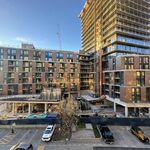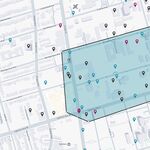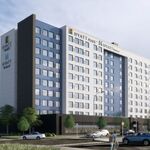If TO brings back trolley buses (which are still used in Vancouver on many routes), we will have to invest in the cables of course, but I think this investment will be made up in the TTC's expenditure in fuel. Electicity is not going to go up AS MUCH as fuel costs are going to.
Back in grad school I was part of a team that did a cost benefit analysis of trolley bus expansion in Vancouver, and we came to the conclusion that it was not worth it under almost any circumstances. For most routes, running a trolley bus would cost up to a million dollars more per bus
per year than running a diesel bus, and would only make sense if the cost of diesel fuel was 7 times higher than it was at the time (that time being not too long ago), and given the assumption that electricity costs would remain constant (of course, if gas goes up 7X in value, electricity is also going to go up considerably).
The main expense, of course, is the trolley overhead which costs $600,000/km to install and about $26,000 per km to maintain over its lifetime. I don't have the figures for streetcar infrastructure, but I am certain it's much more expensive. Thus, there is no economic justification for streetcar expansion. Even at the low end I would imagine a new streetcar line costs more than $5 million/km and there are the costs of maintaining the line and overhead over its lifespan. The ridership would have to be increased many times over (like more than 10X - or far more than any present LRV can deliver) in order for it to be cost effective with a bus.
Of course, the main objective of public transit is not just to be cost-effective but to provide the service of transporting many people efficiently and effectively. For this reason, I would not extend this kind of cost benefit accounting to rapid transit (whether it's light rail or subway). Rapid transit is a totally different kettle of fish: its purpose is to create the backbone of a regional transit system and transport large numbers of people quickly over greater distances. Streetcars, however, are just surface milk-runs. They might have capacity advantages over buses, but they are bus substitutes, not real rapid transit.






